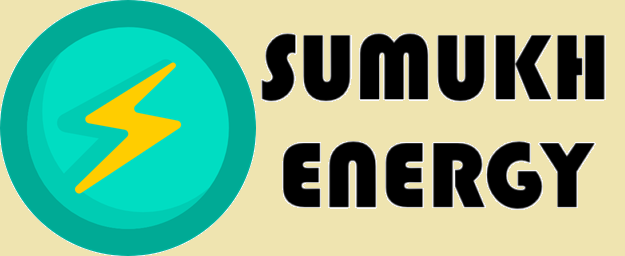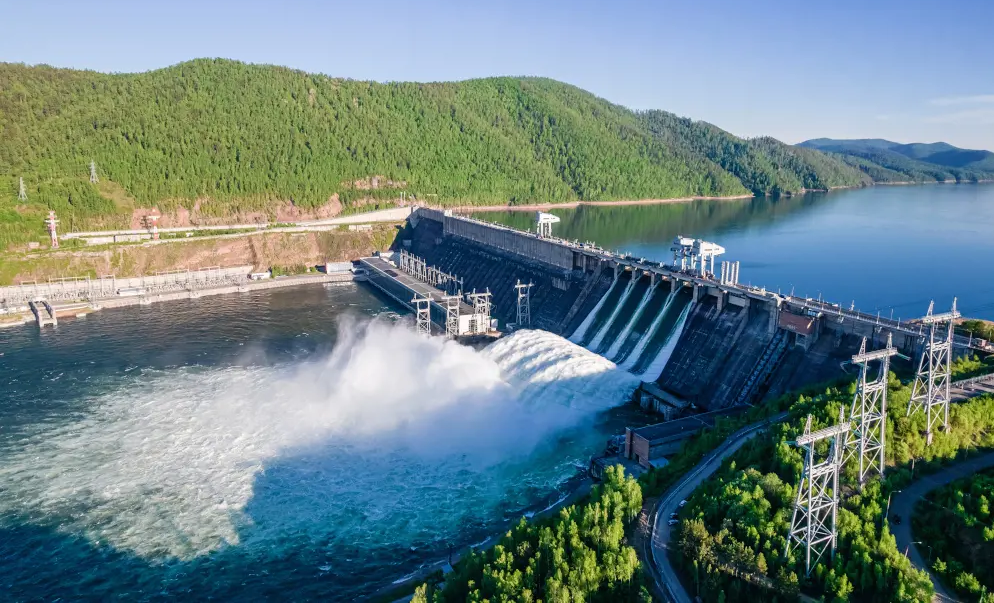Hydro power is energy derived from moving water converted into electricity. It is the largest single source of renewable electricity globally and plays a central role in efforts to decarbonize power systems while providing grid stability, storage and flexible generation. Beyond electricity production, hydro projects contribute to irrigation, flood control and water supply management, making them vital for integrated resource planning.
The scalability of hydro power ranges from small run of river plants serving rural communities to mega dams that can power entire regions. With conversion efficiencies often above 90 percent, hydro remains one of the most effective methods of transforming natural energy into usable electricity. However, its deployment requires careful evaluation of ecological and social impacts, as reservoirs can alter river ecosystems and displace populations.
Looking ahead, innovations in pumped storage and turbine technology are expanding the role of hydro in balancing the variability of wind and solar energy, ensuring it remains a backbone of the clean energy transition.
How Hydro Power works?
Hydro power converts potential energy of stored or flowing water into mechanical energy using a turbine and then into electrical energy using a generator. Typical components include a reservoir or upstream intake that creates a head or pressure, a penstock or intake conduit that conveys water to turbines, a turbine that converts hydraulic energy into shaft torque, a generator that converts mechanical torque into electricity and tailrace or environmental flow structures that return water to the river system.
The general mathematical formula for hydropower output is:

Where:
- P = Power output in watts (W)
- ρ = Density of water (kg/m³), usually ≈ 1000 kg/m³ for freshwater
- g = Acceleration due to gravity (9.81 m/s²)
- Q = Flow rate of water (m³/s)
- H = Effective head, or height difference through which the water falls (m)
- η = Overall efficiency of turbine and generator (typically 0.7–0.95)
Example: If a hydro plant has:
- Flow rate Q=200 m³/s
- Head H=50 m
- Efficiency η=0.9
Then: P=1000×9.81×200×50×0.9≈88.3 MW
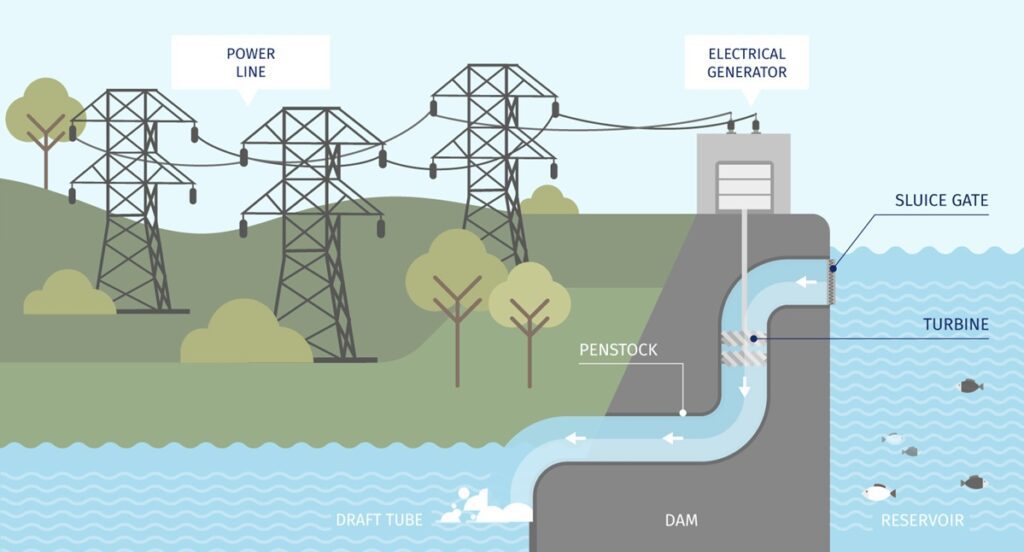
Key physical variables that determine output are the head, measured in meters, and the flow rate, measured in cubic meters per second. Electrical power P in watts can be approximated by the expression P equals rho times g times Q times H times eta where rho is water density, g is acceleration due to gravity, Q is volumetric flow rate, H is effective head and eta is the combined efficiency of turbine and generator.
In practical terms this means that a high head plant such as those located in mountainous regions with heads of more than 500 meters can generate significant power even with a relatively low flow, while low head plants such as river run facilities require very high-water volumes to achieve comparable output. For example, the Hoover Dam in the United States uses a head of around 220 meters to drive its Francis turbines which together provide more than 2,000 megawatts of capacity.
In contrast the Kaplan turbines at the Itaipu Dam operate efficiently under lower head conditions of around 120 meters but benefit from the massive flow of the Paraná River. This illustrates how turbine selection and hydraulic design are optimized based on site conditions to maximize efficiency and reliability
Modern computational fluid dynamics modelling and advanced generator materials have improved efficiency levels so that many plants now achieve conversion efficiencies above 90 percent which makes hydropower one of the most efficient energy conversion technologies available.
Quick key statistics about Hydro Power
Global installed hydropower capacity was about 1,412 gigawatts in 2023 and this scale demonstrates the central role of water-based generation in the global renewable energy mix. Hydropower supplies roughly 14 to 15 percent of global electricity generation which is more than the combined share of solar and wind a decade ago and it continues to provide reliable baseload in many regions.
The largest single hydropower facility by installed capacity is the Three Gorges Dam in China at 22,500 megawatts and it can generate close to 100 terawatt hours annually which is comparable to the entire yearly electricity consumption of countries such as the Philippines. The Itaipu facility on the Brazil Paraguay border with an installed capacity of about 14,000 megawatts regularly ranks among the top producers by annual output and in 2016 it generated over 103 terawatt hours which was then a world record.
Pumped storage hydropower provides more than 90 percent of the world total of electricity storage capacity and systems such as the Bath County Pumped Storage Station in the United States with 3,000 megawatts of capacity act as giant batteries that stabilize power grids by storing surplus renewable electricity and releasing it during peak demand. These statistics illustrate how hydropower not only contributes significantly to global energy supply but also plays a technical role in balancing variability from other renewable sources.
Core technologies and turbines
Modern hydro uses several turbine classes chosen by head and flow conditions.
Francis turbines
James Bicheno Francis developed the Francis turbine in the 19th century. Francis turbines are mixed flow machines used across a broad range of heads and remain among the most widely used designs globally. They are typically applied in medium head conditions between 40 and 600 meters and can reach efficiencies above 95 percent which makes them suitable for both large scale dams and medium sized river projects.
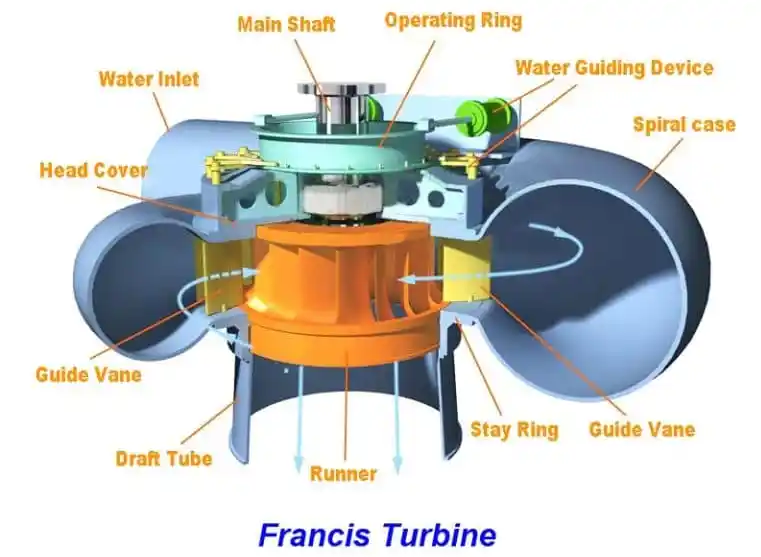
For example, the Hoover Dam in the United States employs multiple Francis turbines that together provide more than 2,000 megawatts of capacity demonstrating the reliability and scalability of this design.
Kaplan turbines
Viktor Kaplan invented the Kaplan turbine in the early 20th century. Kaplan machines are propeller type turbines with adjustable blades that are efficient at low head and high flow conditions. They unlocked economically viable hydro generation for many river sites with moderate heads. These turbines are commonly used in heads ranging from 10 to 70 meters and can achieve efficiencies close to 90 percent even when water flow fluctuates.
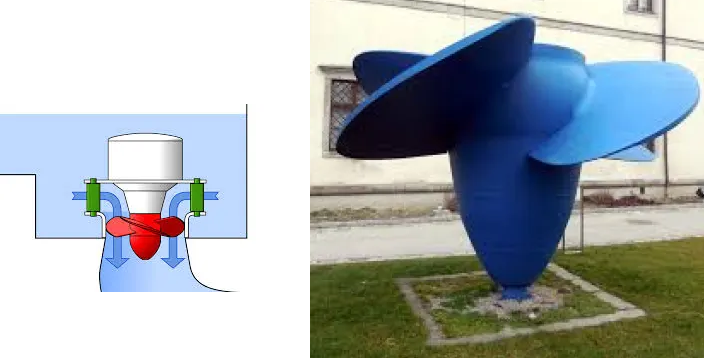
The Kaplan units at the Itaipu Dam in Brazil and Paraguay allow continuous operation under varying river conditions and deliver reliable power from one of the world’s largest hydropower plants.

Pelton wheels
Lester Allan Pelton created the Pelton impulse wheel. Pelton technology is well suited to very high head, low flow situations where water jets strike bucket shaped runners. Reliable mechanical design and efficient energy capture make Pelton wheels common in mountainous hydropower installations. These turbines operate efficiently at heads above 300 meters and can reach efficiencies greater than 90 percent, making them ideal for alpine and hilly terrains.
The Bieudron Hydropower Plant in Switzerland which uses Pelton turbines under an exceptionally high head of 1,869 meters and delivers over 1,200 megawatts of capacity, proving the effectiveness of this design under extreme hydraulic conditions.
Pumped storage
Pumped storage operates as a large mechanical battery. When surplus electricity is available it pumps water to an upper reservoir. During peak demand it releases that water through turbines to generate electricity. Pumped storage provides bulk energy storage and system services such as frequency regulation and spinning reserve. Globally pumped storage supplies the majority of stationary electricity storage capacity.
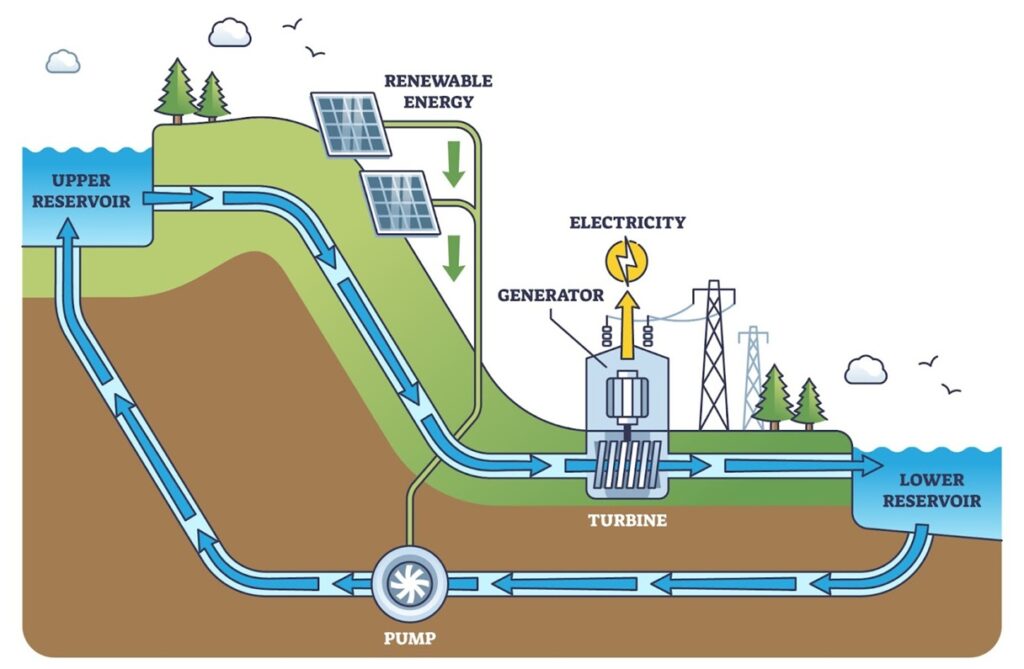
Facilities such as the Bath County Pumped Storage Station in the United States with a capacity of 3,000 megawatts demonstrate how these systems can shift large amounts of energy across daily cycles. In China, the Fengning Pumped Storage Power Station with 3,600 megawatts of capacity represents the world’s largest installation and shows how pumped storage is increasingly deployed to balance the variability of large-scale wind and solar generation.
System integration and grid services
Hydro assets provide a suite of grid services beyond energy. These include inertia contribution, fast ramp capability, black start ability and long duration storage when used as pumped storage. Because hydro can be dispatched flexibly and can provide multi hour to multi day storage it supports penetration of variable renewables such as wind and solar.
The Dinorwig pumped storage facility in Wales can reach full output of 1,728 megawatts within 16 seconds which makes it invaluable for stabilizing frequency during sudden demand spikes. Similarly, hydro plants in Norway are deeply integrated with the European grid where their flexible operation balances fluctuations from offshore wind farms and ensures consistent supply reliability.
Environmental and social considerations
Hydro power has both environmental advantages and trade-offs that require careful management. Positive aspects include low direct carbon emissions from generation compared with fossil fuel plants once dams and infrastructure are in operation, long asset life often exceeding 50 years which can amortize embedded emissions over long periods, and provision of reliable baseload and flexible power that enables higher shares of wind and solar.
Challenges and trade-offs include reservoir creation which floods land leading to habitat loss, community displacement and methane emissions from decomposing biomass in tropical reservoirs, alteration of river flow that impacts sediment transport, fisheries and downstream agriculture, and geopolitical risks when large dams alter transboundary river flows. Site specific ecological and social costs mean that each project requires rigorous assessments and transparent stakeholder engagement.
Mitigation options include run of river designs that minimize storage by relying on natural flow, fish passage structures, sediment management, prioritizing refurbishment and efficiency upgrades at existing dams, and strategic planning to identify sites with lower ecological footprints.
Multiple international bodies and research programs now emphasize sustainable hydropower planning and standards to minimize negative impacts. For instance, the World Commission on Dams reported that some large projects in Asia and Africa displaced hundreds of thousands of people which highlights the importance of thorough resettlement planning.
In contrast refurbishment projects in Europe such as turbine modernization in Switzerland have increased output by more than 10 percent without additional land flooding, showing how technological upgrades can reduce ecological pressure while boosting efficiency.
Global trends and recent developments
Installed capacity has continued to grow but growth rates vary by region. China has been the dominant installer of new capacity in recent years. Pumped storage additions have increased as systems need long duration storage to balance wind and solar. International reports estimate that to meet deep decarbonization scenarios the world likely needs roughly double current installed hydropower capacity by mid-century along with substantial pumped storage expansion.
Notable recent projects and developments include the Three Gorges Dam in China which remains the largest single facility by installed capacity at 22,500 megawatts and is a cited example of very large-scale hydropower with massive output and significant environmental and social implications. The Itaipu project on the Brazil Paraguay border remains one of the top producers by annual output and has an installed capacity near 14,000 megawatts.
New construction in some regions remains controversial as large multifacility projects announced or started in recent years have drawn environmental and regional concern and project planners and governments increasingly face scrutiny over water security impacts and biodiversity. For example, China’s Baihetan Dam with a capacity of 16,000 megawatts was commissioned in 2021 and now ranks among the largest hydropower plants in the world, adding substantial clean generation but also altering river ecosystems.
Similarly, India’s push for pumped storage development has seen projects like the Kundah pumped storage scheme in Tamil Nadu designed to provide flexible support for growing solar capacity, showing how hydropower is being integrated into renewable heavy grids.
Final Thoughts
Hydro power is a mature, scalable and flexible renewable technology that already supplies a large share of global clean electricity and provides essential grid services. At the same time its environmental and social impacts require rigorous site-specific assessment, strong governance and modern planning approaches. For an environmentalist, the highest priority is to unlock hydro power benefits while minimizing ecological harm and protecting affected communities.
Strategic focus on modernization, pumped storage and sustainable site selection can align hydro development with global climate and biodiversity goals. For example, refurbishment projects in Canada and Norway have extended the lifespan of dams by several decades while increasing output efficiency without requiring new reservoirs, proving that modernization is a cost-effective path forward.
Likewise, pumped storage projects in countries such as China and India are being deployed at multi gigawatt scale to stabilize grids with high shares of wind energy and solar, showing that hydro power remains a cornerstone of the clean energy transition when planned responsibly.
